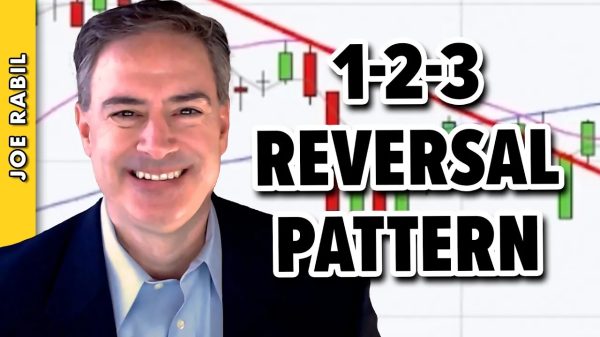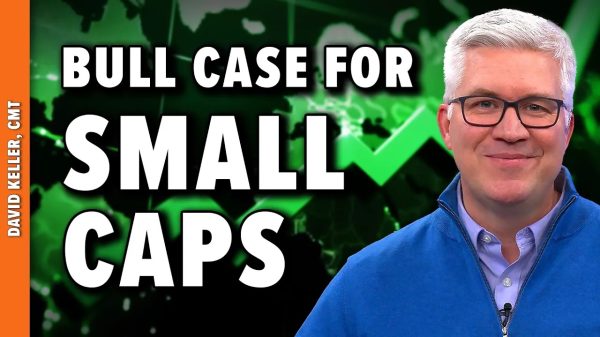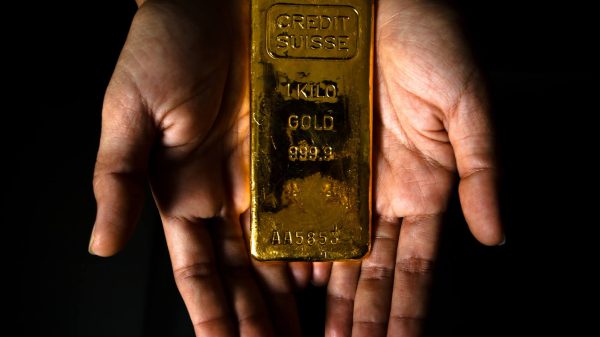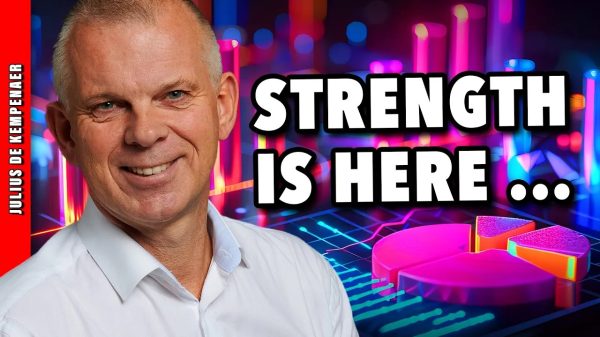Government-Managed Digital Currency: A Further Threat to Our Freedom
by Paul Gottfried
Whatever the modern self-described liberal democratic administrative state claims to be doing in the name of disadvantaged people is intended primarily and perhaps exclusively to increase government control. Further, whenever the same regime purports to be making our lives more comfortable, more agreeable, we may assume that our freedom and property rights are under assault.
Therefore, when I read about an executive order issued by the Biden administration last year regarding a plan for digital currency, I naturally suspected something quite dire.
The attempt to present central bank digital currencies (CBDC) as a courtesy that the state will be providing grateful citizens is patent nonsense. The government’s digital currency issued through central banks will more likely help concentrate financial activity in the hands of the state. Government officials will then drone on about equity while extending electronic credit to some but not others. This will have the predictable effect of creating clandestine financial activity.
The cheerleading for this innovation is coming from the White House and from progressive legislators like Maxine Waters. Waters, in particular, seems dazzled by how expeditiously the Chinese are moving beyond their onetime dependence on paper money while centralizing all financial activities in the hands of the state.
Since worst-case scenarios usually turn out to be true when we’re talking about public administration, whose officials, as we know, vote overwhelmingly for the Left and the extension of public control, we can understand why this cheerleading is coming from a leftist legislator. Waters and other congressional advocates of CBDCs have taken the side whither their politics would drive them.
For the rest of us, however, it may be good to keep in mind, with regard to government-run digital currency, what Ronald Reagan once declared to be the most frightening words in the English language. They are, I’ve come from the government, and I’m here to help you.
Central Bank Digital Currencies: The Last Battle in the War on Cash
by Jonathan Newman
When it comes to a central bank digital currency (CBDC), there really is a lot of guesswork. We won’t know what it will look like or what the full effects will be until or if one is implemented. That’s why so much of the technocratic chatter about a CBDC is a complex web of pros and cons and ifs and thens and elses.
I want to read a short passage from Murray Rothbard’s For a New Liberty: “There were two critically important changes in the philosophy and ideology of classical liberalism which both exemplified and contributed to its decay as a vital, progressive, and radical force in the Western world. The first, and most important, occurring in the early to mid-nineteenth century, was the abandonment of the philosophy of natural rights, and its replacement by technocratic utilitarianism. Instead of liberty grounded on the imperative morality of each individual’s right to person and property, that is, instead of liberty being sought primarily on the basis of right and justice, utilitarianism preferred liberty as generally the best way to achieve a vaguely defined general welfare or common good. There were two grave consequences of this shift from natural rights to utilitarianism. First, the purity of the goal, the consistency of the principle, was inevitably shattered. For whereas the naturalrights libertarian seeking morality and justice cleaves militantly to pure principle, the utilitarian only values liberty as an ad hoc expedient. And since expediency can and does shift with the wind, it will become easy for the utilitarian in his cool calculus of cost and benefit to plump for statism in ad hoc case after case, and thus to give principle away.”
And in the end, Rothbard said that utilitarians found it ever easier to slide further and further into statism. This tells me that while there is a time and a place to get into the weeds, showing the immense threat of a CBDC in terms of what it would mean for taxpayers, depositors, and anyone who uses the dollar, ultimately we should reject it and the whole idea of central banking on principle.
It’s enough to say that programmable money means programmable citizens, and sound money means free people.
Why This Time the Dollar Faltered has been Different from the Last Time
by Jeff Herbener
There was some expectation that when the Bretton Woods system came to an end in the early 1970s, we’d move to something like a multipolar, as they called it, international reserve system. And it turned out that this didn’t happen. The empire struck back, and the dollar sort of miraculously reasserted itself during the period from, say, 1982 to 2000. Economists called this period, especially the 1990s, the Great Moderation, where the dollar reasserted itself in its international status. And I would go as far as to say that the dollar went beyond becoming a reserve currency to becoming actually the unit of economic calculation for international trade. And this has changed the way in which we should think about the future of the dollar and all the policy questions that have arisen.
Paul Krugman, in a highly cited paper on the international role of the dollar that he published in 1984, wrote, “The future of the United States monetary system is largely a political question, but the future of the international role of the dollar is largely an economic one.” The dollar has become essentially the unit of economic calculation for engaging in foreigntrade transactions. Then it has a kind of status that it didn’t have under Bretton Woods, when it was merely a reserve currency. It’s still a reserve currency, but now it’s both a reserve currency and an international unit of economic calculation. It didn’t have this status before. I think it’s important that we entertain this notion to think correctly about the future of the dollar.
The dollar has really become more important in international trade and has in fact become a medium of exchange for foreign-trade transactions, for exchange in foreign currencies. Because, of course, all businesses would like to be able to do their accounting, international trade accounting, in one currency, right? And so the dollar dominates this. It gives the dollar greater importance internationally, and therefore increases the demand for the dollar internationally. This suggests the dollar will continue in its status as an important international currency regardless of what happens to its reserve status.
How the End of the US Dollar Hegemony Affects the Business Landscape
by Peter Klein
Now what exactly does dollar hegemony mean? For purposes of this talk, I mean something like the system we have now. So a governmentissued fiat US dollar which also serves as the world’s reserve currency, giving the US monetary authorities the ability to influence not only business conditions and economic conditions at home, but also to have vast influence in the economies of the world, to intervene in foreign policy and affect governance and all sorts of issues around the world.
We currently have constant changes in the value of money associated with monetary policy. Not just the demand for money by users, by people who want money, but changes in the supply of money under the control of the central bank, increases in the variability of, the noise, associated with, the price system. And of course, trying to figure out what the monetary authority will do, meaning that businesspeople have to be armchair psychologists as well. What color tie did Greenspan have on? And Janet Yellen, what was her expression in the press conference? Trying to figure out what she’s really thinking.
Think about how much money entrepreneurs spend on macroeconomic forecasting. This is not trying to forecast, Will consumers like my gadget? but What will the Fed be doing between now and when my gadget hits the market? So entrepreneurs have to spend their effort figuring out how to navigate all of these other things in addition to just doing the stuff that entrepreneurs normally do.
So if by the end of dollar hegemony we mean a monetary unit that is less subject to political control, and price changes that reflect changes in the value of the commodity, and relative price changes for entrepreneurs that reflect changes in relative values rather than the whims of government officials, and a reduced scope for government intervention more generally—in other words, fewer obstacles in the way of economic calculation by entrepreneurs—then I say bring it.
Managing the Influx
by Shawn Ritenour
Suppose for the sake of argument that the dollar, through a general loss in the confidence in the US economic or political systems or both, loses its accepted status as global currency. What then? Now, if that happens, it is unlikely that if a dollar loses its reserve status abroad, it will do so overnight. And even if it does, it is unlikely that all of those dollars held overseas will come back to the United States right away. But what if they did?
Now, over the past two years, the money multiplier has been running on average about 5.8 over the past two years. That means that due to the fractional reserve banking system that we have, for every dollar in commercial bank reserves, $5.80 was created through credit expansion and held by the nonbank public. So if $1.1 trillion came back to the United States and ended up in commercial bank reserves and then were multiplied via credit expansion in our fractional reserve system with the money multiplier of 5.8, there would be over $6 trillion of new money created and held outstanding. That would increase the money supply by about a third.
It might make even the last two years look like the golden age of price stability. It’s hard to imagine, but the Fed is great at doing what’s hard to imagine. Now I suspect that not even Janet Yellen prefers hyperinflation. So what might the Fed do to mitigate such a disastrous outcome?
Whatever the Fed does do, we can expect that we’ll get policies that give more control of the financial system and economy in general to the banking elites.
They will further work to socialize our monetary system, with all its inflationary consequences, perhaps even hastening the demise of the very dollar they will try to prop up. Such is the nature of central bank entrepreneurship. One might say that the Fed is the true creative destroyer. After all, economic law is mightier than any number of central bankers.
Wall Street and the Origins of Bretton Woods
by Patrick Newman
I’m talking about Wall Street and the origins of Bretton Woods. And if we think about what the end of the dollar era means, it’s very helpful to understand how we actually got to this dollar era, how we actually got to the dollar as the world reserve currency. What was the process behind that? Was this just a public interest–motivated legislation or was there actually cronyism at work? Remembering the origins of the Federal Reserve at Jekyll Island is important here.
You might remember Nelson Aldrich; he was a famous senator from Rhode Island, author of the Aldrich Plan. And what’s very fascinating is, like father like son, his son, Winthrop Aldrich, played a big role in setting up Bretton Woods.
Bretton Woods was the system created right around the end of World War II, and it lasted until the early seventies. This helped establish the dollar as the world reserve currency. The dollar was redeemable internationally in gold by large banks and by governments. Thirty-five dollars would buy an ounce of gold. Other currencies were redeemable in dollars. The United States currency was in a sense the reserve for all of the other currencies, at least of the free capitalist world, so to speak, countries in Europe, Japan, etc. And this created an enormous demand for dollars.
Bretton Woods created the IMF, the International Monetary Fund, and also the World Bank. This is government funded, and it would loan dollars to various countries for currency stabilization.
Wall Street, particularly the Chase National Bank, which was led by Winthrop Aldrich, played a big role in shaping the Bretton Woods system and making the dollar a world reserve currency because in the 1920s, the dollar was actually technically a world reserve currency.
Why did Wall Street want Bretton Woods? What were they going to get out of it? Was it for the good of the United States? No. They wanted other countries to hold the dollar as reserves. They wanted the dollar to become the world reserve currency. This would increase the demand for dollars. Of course, all of their assets and securities, etc., are denominated in dollars. This would increase the prestige of New York City as a worldwide financial center.
So in the late 1940s and in the early 1950s, the World Bank makes loans in Japan, in Chile, and other countries. It was very noticeable. You can see Wall Street’s influence throughout the process. Bretton Woods extends this influence to Latin America, to Africa, and then, especially in the 1950s, to countries in the Middle East. In the 1950s, oil politics start to become a very big thing. And again, it’s all part of making sure that these countries are linked to the United States and to the dollar. Remember, loans to these countries are in dollars. They’re going to use those dollars to buy things, to back their currencies. At Chase National Bank, for example, postwar foreign loans increased by 85 percent. It’s a huge amount. It was becoming a worldwide bank.
This was the beginning of the establishment of the United States dollar as having that world reserve currency status, which has continued since Bretton Woods. And a big reason for that was Wall Street.
How to Reform the Fed
by Alex Pollock
The Federal Reserve is the most powerful financial institution there has ever been, and certainly the most powerful there is, and such a role could easily lead to an excessively high opinion of its own authority. But at the same time, there is an offsetting fundamental weakness. And it is this: the Fed cannot possibly know what it’s really doing.
The Federal Reserve in the last twelve and a half months . . . has made net operating losses of $109 billion. That’s as of October 11. The Fed’s capital has become −$66 billion under proper and normal accounting. That is to say they’ve run through their entire capital of $43 billion and another $66 billion on top of that.
This shocking number is getting rapidly bigger. The Fed continues to lose money at the rate of $9.5 billion a month. That’s $2.3 billion a week. That’s $114 billion a year. And these losses look set to continue for a long time to come. And thus, the Fed’s negative capital is likely headed to getting worse and worse. It’ll be −$100 billion or so by early next year, 2020–24. And how does the Fed finance this negative capital? It finances it by borrowing. That is to say by actually running up the debt. But the debt is off the Treasury’s books. It’s the Fed’s own debt.
So the Fed’s liabilities are greater than its assets. It’s technically insolvent, as we say, and it fills up the gap by increasing the debt of the consolidated government, where “consolidated government” means the Treasury plus the Fed, which have been tightly connected for the entire lifetime of the Fed. . . . Now how should we think about the scale of these losses? The scale of the losses is doubtless a surprise to the Fed itself. This is apparent from the woefully inadequate forecasts of continued low interest rates for a long time, which they made while amassing literally trillions of dollars of investments in very long-term, very low-rate assets.
The Fed has clearly demonstrated its total inability, like everyone else’s inability, to predict the economic and financial future. The Fed is inherently unable to know what the results of its own actions will be, or even what its own actions will be, although it tries to commit itself. But it doesn’t work. The Fed’s amazing power, combined with its inescapable lack of knowledge of the future, makes it also the most powerful, the most dangerous, financial institution in the world.
In the memorable and brilliant phrase of Hayek’s Nobel Prize lecture, there should be no pretense of knowledge about central banking. And in all, as it heads for its 110th birthday in December of this year, the Federal Reserve, with all its power and all its danger, needs to be controlled.
The Dollar Crises of 1861–1865: Greenbacks, Gold, and Confederate Dollars
by Timothy Terrell
The banking system prior to the War between the States is commonly known as the free banking era. During this time, regulation of banking was relatively light, not, of course, nonexistent. Until 1863, state banking commissions chartered all public banks in the United States. There was no national paper money. Individual chartered banks issued banknotes that would generally circulate in a small regional area.
Contrary to the predictions of some, when money was taken out of the hands of the government and subjected to a private market, it produced a stable free market money supply. Of course, war tends to bring about a lot of turmoil, not only through military destruction and so forth, but also financially. It also brings about a degradation of the monetary system very often. And when the War between the States came along in 1861, both the North and the South had significant monetary crises. Of course, most of the money for the war was raised, at least in the North, by borrowing.
The Union went deeply into debt to pay for the war. When the demand for bonds dropped off as the popularity of the war began to diminish, especially in 1863, there were draft riots, there was antiwar sentiment that was growing in the North. The government needed to drum up some demand for their bonds, and so they implemented another part of Henry Clay’s American System: we got the National Currency Act of 1863 and the National Banking Acts of 1863 and 1864, which created nationally chartered banks.
The Confederacy, of course, faced even greater financial problems during the war than the North did. The Confederate government did try to borrow, but they, unlike the North, did not get the majority of their money from borrowing—only about 35 percent. A lot of the Confederate money came from money creation. The Confederate Treasury issued something like a million dollars of notes in 1861. But by 1863, that was pocket change. They had issued $700 million worth of notes and produced a rapid inflation.
In fact, it became so bad that some Confederate troops were paid with greenbacks, because Confederate dollars were not enough to entice them to continue.
This is one of those currency destruction problems that we see . . . and it illustrates the basic idea that governments can raise funds in one of three ways or any combination of three ways, taxing, borrowing, or inflating. And if governments run into problems with taxation, too much political blowback from trying to raise taxes, or if their credit rating suffers and they can’t borrow very well anymore, they will print. If the interest rate on those bonds rises and governments find themselves oppressed with a great deal of debt, then that is going to result in even more temptation to run the printing press.
The Life and Death of American Exceptionalism
by Tom DiLoreno
In 1960, Life magazine invited Robert Penn Warren, a famous novelist, to write a book about the centennial of the Civil War. So he wrote a book called The Legacy of the Civil War. It’s a very interesting book. I highly recommend it. It’s written by one of the greatest American novelists ever. One of the things that really stands out in this book, as he talks about the one effect of the Civil War, is that the US government claimed to have a treasury of virtue.
Warren calls this “a plenary indulgence for all sins past, present, and future. The government emerged so full of righteousness that there is enough overplus stored in heaven to take care of all the small failings and oversights of the descendants of the crusaders.” I guess the crusaders were the Union Army, Sherman, and the people like that.
He says a moral narcissism fueled the crusades of 1917 and 1918, American intervention in World War I, and 1941 to 1945. Our diplomacy is one of righteousness with the slogan of “unconditional surrender” and “universal rehabilitation” for others, but not for us. We don’t need to be rehabilitated. We’re already perfect. But for others, we will bring democracy to your country. And then he said, “the effect of this conviction of virtue is to make us lie automatically.”
All governments are empires of lies, but this is the unique American method of institutionalized lying. When you’ve got a treasury of virtue, you can be the bully of the planet, because whatever you do is virtuous by the fact that it is you doing it.
So what is the connection between the dollar decline and all of this? What’s going on now is that I think this treasury of virtue has pretty much run its course.
For all of the lectures and for the full lectures from which these excerpts were taken, click here.






















